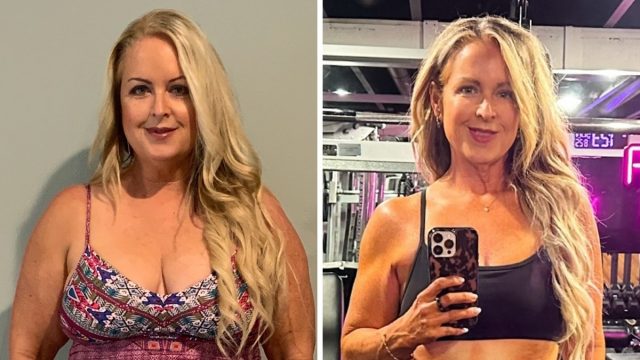CEO Lost 90 Pounds at 52 Without Ozempic by Doing These 7 Things

Are you struggling to lose weight in your 50s? Make some simple changes to your routine. Trish Cheatham, CEO of Think Tank and White Buffalo Film Studios, is a 52-year-old on a fitness journey. On her This Phoenix Rising social media page, she shares about her weight loss journey after losing 90 pounds "naturally." In a new post, she reveals her dramatic before-and-after transformation photo and shares the top 7 habits responsible for her weight loss.
She Says That Many People Feel Like They Are "Falling Apart" in Their 50s
"Every day I see a new post on social media from a friend about a health ailment. Now that we are nearing our 50s, it seems like everyone is falling apart. It frustrates me because I see how helpless they feel and they just accept that this is life and part of aging," Trish writes.
"I try and educate them on the facts: that you can change your health through proper diet, nutrition and exercise – but it often falls on deaf ears. I'm met with a lot of resistance. People don't want to change their ways, they are comfortable in what they know."
She Has Watched Lots of People Succumb to Health Conditions
"I've watched as many of my friends suffer through health conditions, some have even succumbed to them. Others will temporarily get healthy only to fall back into bad habits – because, let's face it, being bad is sometimes fun. (Am I right?)" she writes.
She Reversed It, and You Can Too
"Listen, I've been there. I've not heeded the small wakeup calls before – it took a big one for me to go WHOA and stop my bad behavior. But, now that I'm on the other side, I just wish I could scream from the rooftops, 'YOU CAN REVERSE THIS! YOU CAN FEEL BETTER! YOU CAN HAVE A BETTER LIFE'" she says.
The Roadmap Is "Really Simple and Easy"
"Okay, so maybe that's what I'm trying to do here…Some days I feel like I'm hitting my head against the wall. I share and share and still people aren't ready to change. They have to make that decision themselves – there's no amount of convincing I can do to make that happen. However, for those ready, the roadmap is really simple and easy," she continues.
Find a Functional MD and Good Bloodwork Done
The first thing she recommends doing is consulting an expert. "Find a Functional MD and get your bloodwork, hormones, gut health and overall health in order," she writes.
Start Eating Healthy
The next thing to do is to work on your diet. "Start eating healthy. Cut out the processed food and junk. Stop going out to eat, especially fast food," she says.
Quit Drinking
Also, she recommends not drinking alcohol. "Dump the alcohol. All of it. Now. Drink water and lots of it," she says.
RELATED: 8 High-Protein Foods with Nearly Zero Calories That Melt Fat
Exercise
She also recommends exercising. "Move your body. Every. Single. Day. Get steps in and stay active," she says. A 2018 study published in the journal Obesity found a link between walking 10,000 steps a day and weight loss and weight management. Other studies published by the Journal of American Medical Association (JAMA) in JAMA Neurology and in JAMA Internal Medicine also linked walking 10,000 steps a day to less dementia and less cardiovascular disease overall, with less heart disease, less heart failure, and fewer strokes.
Lift Weights
Strength training is also key. "Lift weights – and heavy ones. And make sure you are lifting heavier ones each and every day," she says. According to the Mayo Clinic, strength and weight training help reduce body fat, preserve and increase lean muscle mass, and burn calories more efficiently. Strength training may also help you:
- Develop strong bones
- Manage your weight
- Enhance your quality of life
- Manage chronic conditions
- Sharpen your thinking skills.
Get Enough Sleep
"Prioritize sleep and make sure you get 7-8 hours a day," she continues. What are the health benefits of sleep? According to the Sleep Foundation, getting enough z's is a mood booster, promotes heart health, regulates blood sugar, improves mental function, restores your immune system, helps relieve stress, and aids in weight loss.
Reduce Stress
Her last tip. "Do your best to reduce stress in your life (trust me, I know how tough this one is!)" she says. "Life is precious and living our best life in the most amazing gift we can give to ourselves and those we love most." And if you enjoyed this article, don't miss 12-3-30 Walking Method: 20 Proven Tips to Lose Weight Faster.




